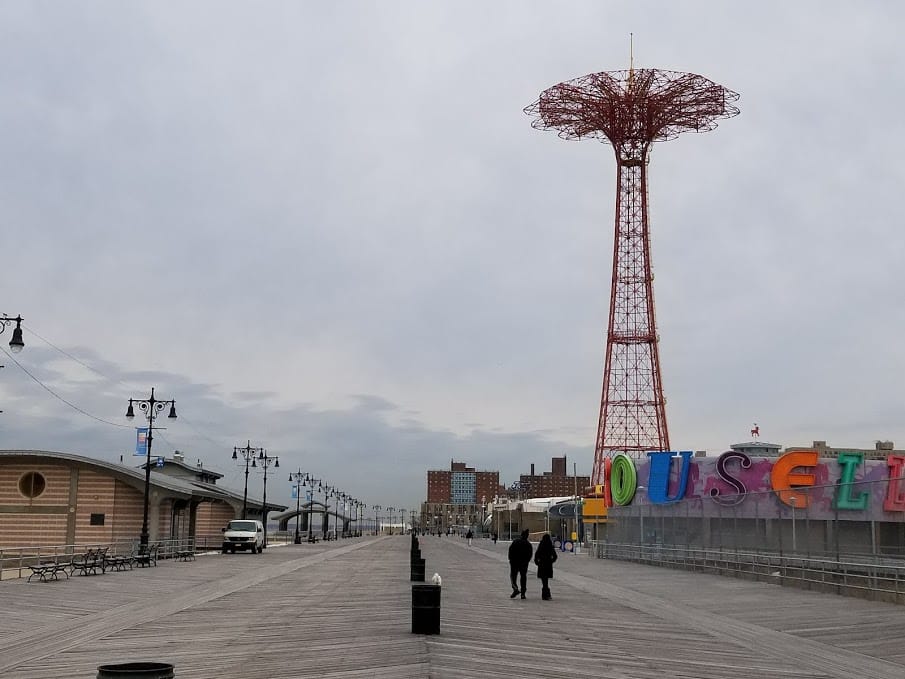Coney Island’s Boardwalk One Step Closer To Being Saved


CONEY ISLAND – After years of effort from local politicians and communities, Coney Island’s Reigelman Boardwalk is one step closer to becoming an official NYC landmark.
Today, the Landmarks Preservation Commission (LPC) voted in favor of putting the 2.5-mile wooden promenade—along with the Steeplechase Pier, the light fixtures, railings and even the sand underneath the boardwalk—on the calendar for further review and eventually a vote.
Next in the process will be a public hearing on the proposed designation, followed by a public meeting with discussion and a vote by the Commission regarding the landmark designation.
The Boardwalk would be considered a “scenic landmark,” a designation shared by Prospect Park, Ocean Parkway and Eastern Parkway in Brooklyn. Importantly, the designation would “recognize the historic and cultural importance of the Boardwalk while protecting its physical presence along the coastline and its general parameters including the configuration of the boardwalk (length and width),” according to the LPC.
The possible designation has been years in the making—kicking off in 2014, after the city moved to replace most of the iconic lumber planks with easier to maintain concrete. Wooden boardwalks were deemed unable to withstand storm surge by the Bloomberg administration in 2008—a stance the De Blasio administration ran with. But the plan to pour concrete in place of the planks ran contrary to the plans of Assemblymembers Alec Brook-Krasny and Steven Cymbrowitz, who had allocated $10 million to the Parks Department in 2009 for general repairs and improvements to the iconic span.
“This is an underhanded misuse of the money and the mayor knows it. I will work to make sure that the millions of dollars I allocated are cut off. I fought hard for the boardwalk to be repaired, not to fund the elimination of the boardwalk as this community and all New Yorkers know it,” Cymbrowitz said in a statement.

In response to the dilemma, Councilmember Mark Treyger, along with Councilmember Chaim Deutsch, urged the Landmarks Protection Commission to designate the boardwalk a scenic landmark in an effort to stop the replacement.
“This is a globally recognized iconic structure that draws millions of visitors each year,” Treyger said at the time. “Many New Yorkers recall stories from their childhood when their families took them to the boardwalk. We strongly believe that the boardwalk is worthy of being designated a city landmark, and is worthy of the same designated services every other piece of our local infrastructure has.”
Originally rebuffed by the LPC in what he described as “an insulting form letter,” Treyger tried again, until the Commission Chair agreed they’d be open to revisiting the issue. Despite setbacks, Treyger not only authored a resolution calling for the designation from the LPC (which 49 of 50 councilmembers supported), but also called on residents to testify before the commission in favor of preserving the boardwalk.
The campaign was successful in halting the wholesale paving of the boardwalk, though some sections have been replaced by concrete and recycled-plastic lumber. Now, a few years later, the effort looks to have paid off: with a yet-to-be-scheduled hearing promised by the LPC, it looks like the boardwalk is on its way to being saved—just in time for the summer tourist season!



